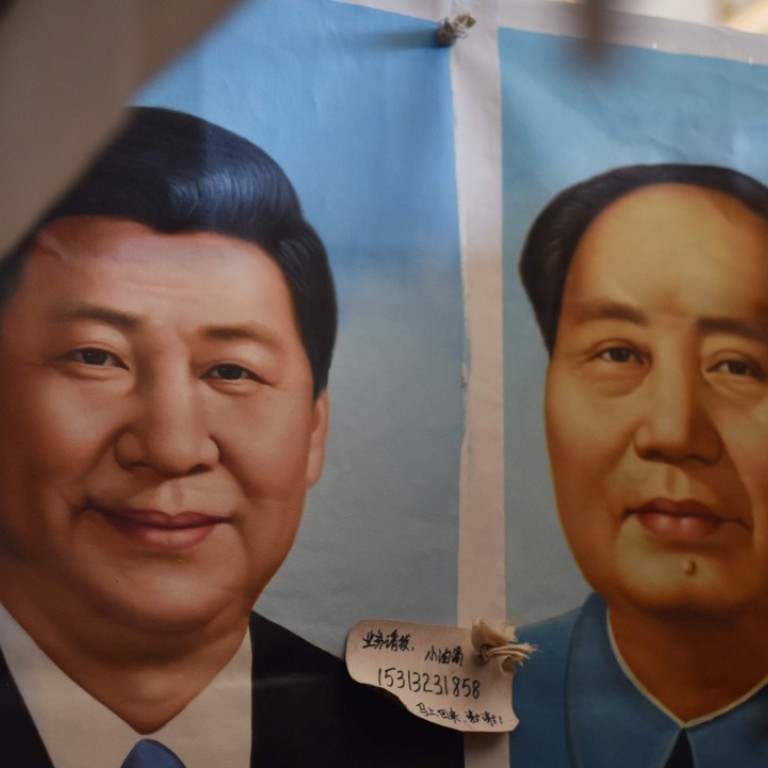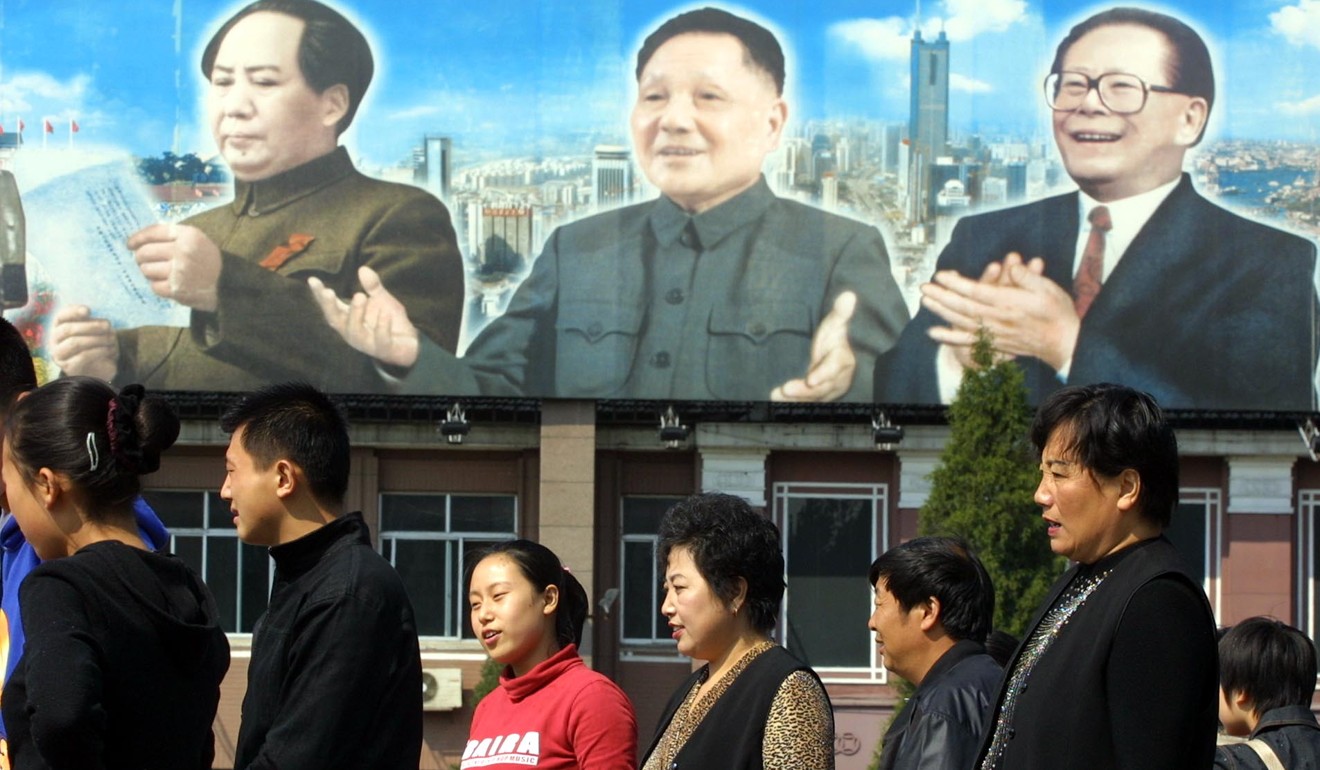
Under Xi, a Chinese renaissance is assured, contrary to what the West believes
Eric X. Li says Xi Jinping’s transformative vision for China and the Communist Party, along with his concepts of globalisation and Marxism with Chinese characteristics, are the perfect combination for leading the country into a new era of prosperity

It is a laborious effort, especially considering the report’s extensive official jargon and policy details.
But there is a much easier way. Read The Economist ’scoverage of the party congress, which is considerably shorter in length, and bet on the opposite being true. Let me explain.
In October 1992, during the 14th party congress, The Economist editorialised that the Communist Party had “stepped backwards” and called the socialist market economy (which the congress espoused) an “oxymoron”.
Five years later, in 1997, during the 15th party congress, it characterised the gathering as an event where “hollow promise[s]” were made and broken, from privatisation to unemployment goals. Dashing raised expectations was a “recipe for civil strife”, opined the magazine.
At the 16th congress, in November 2002, the magazine pronounced that the “familiar policy of trying to muddle through” was no longer an option for a party that faced looming troubles; words such as “crisis” and “unrest” were ominously used.

Another five years would pass. The same magazine dutifully expressed dissatisfaction at the lack of reform during the 17th party congress: “Politically, little has changed.”
The Economist ’s howls reached a crescendo in the autumn of 2012; during the 18th congress, China was “unstable at the grass roots, dejected at the middle strata and out of control at the top”, it said, quoting an anonymous source. That could only be outdone by this year’s cover, which warned the world not to “expect Mr Xi to change China, or the world, for the better”.
Why China is reviving Mao’s grandiose title for Xi Jinping
Now let’s actually look into the content coming from this congress.
Usually a party congress provides a five-year blueprint. What distinguishes this congress is how far into the future it looks. This congress set the timeline for China from today through 2050. The last time we saw this scope in reforms was in the 1980s, when Deng Xiaoping set out to build a “xiaokang society”. Taken from Confucius, “xiaokang” means a country of general prosperity and orderly social norms. Deng set an interim goal of reaching US$800-US$1,000 annual per capita income by the year 2000. In 1980, Chinese per capita income was US$220. A fourfold increase seemed like “vaulting ambition” indeed.
The China that Deng envisioned has arrived, and then some
Today, the China that Deng envisioned has arrived, and then some. By several measures, China is the most powerful economic engine in the world. Per capita income is approaching US$10,000. It’s a burgeoning entrepreneurial society that has created some of the largest companies in the world. China has led improvements in health, education, science and overall standard of living at a speed and scale that is unprecedented in human history.
It is at this historic junction that the current party congress was held. As Xi said at the outset of the congress, the party plans to conclude the “xiaokang” project in the next five years.
China stands at a new point of departure. Destination: comprehensive national renaissance. Date of arrival: 2050.
This is no “Yes, we can” or “Make America great again” agenda. Xi’s report includes 12 sections, each breaking into numerous parts covering, with mind-boggling specificity, issues including housing, health, science, defence, artificial intelligence and the sharing economy.
Xi Jinping’s marathon address to the 19th Party Congress, in three minutes:
Beyond “xiaokang”, the party presents a road map for a new 30-year journey to realise the dream of a Chinese renaissance – the plan for a new era of Chinese socialism. The – let’s call it the “Xi plan” for short – can be broken down into four main points.
First, economics. The Xi plan projects the basic realisation of socialist modernisation by 2035, resulting in a major expansion of the middle class, with continuing growth through 2050. In the Chinese political lexicon, this means becoming the economic and technological equivalent of a developed nation. In GDP per capita terms, this would imply up to three times the current level, rising to between US$20,000 and US$30,000. With this performance, China will formally surpass the United States well before 2035.
China has effectively combined socialism and the market economy ... [the] ‘oxymoron’ has become an extraordinary success
Second, sustainability. Xi pointedly said that the primary contradiction of Chinese society has now shifted from underdevelopment to unbalanced development and sustainability. The Xi plan calls for a concentrated drive to eradicate poverty, as the increasing wealth gap resulting from rapid development is the enemy of long-term sustainability.
In the five years since the 18th party congress, at least 60 million people have been lifted out of poverty. If such a rate is sustained, the tens of millions currently living below the poverty line will all be lifted out of it in only a few years.
The environment is, of course, the other threat to sustainability. The Xi plan maps out major structural changes to the economy and energy usage, and envisions a substantially cleaner environment in two decades.
Belt and Road: What is it, where is it going?
China’s active engagement with the world is based on a qualitatively different proposition than the one championed by the West in the recent past. Instead of a universalist approach seeking to standardise the world with the same set of neoliberal economic and political rules and values, Xi advocates a new version of globalisation under which increased interconnectedness does not come at the expense of national sovereignty.
He calls for a global “community of common destiny” but one that fosters a competition of ideas which, given the trouble globalisation is in, makes sense.
If elections and privatisation are the prerequisites to development, why has China succeeded without them?
And last but not least, identity. With the 19th party congress, Xi is formally launching a project to provide a new narrative to current events. The prevailing theories that have guided the world’s thinking about the rise and fall of nations no longer make sense.
If elections and privatisation are the prerequisites to development, why has China succeeded without them, while so many others have failed after taking these prescriptions? In the past 30 years, China has effectively combined socialism and the market economy. In other words, what The Economist called an “oxymoron” has become an extraordinary success.
But how? No leader in the history of the People’s Republic has so emphasised the importance of Chinese traditional culture as Xi. Yet, he is adamant in preserving a Marxist outlook in modern China.
Xi Jinping Thought – the Communist Party’s tighter grip on China in 16 characters
Can we weave together a coherent narrative that absorbs modern Marxism into 5,000 years of China’s heritage? China has actually done it before, by absorbing foreign Buddhism into its Confucian cultural polity more than a millennium ago. That process took more than 100 years. And now it has been more than a century since modern Western ideas, including Marxism, began to influence China.
Xi Jinping tells Communist Party to keep innovating and contributing to Marxism
Paradigm shifts in fundamental narratives take a very long time, and China’s is only at its formative stage. Xi seems determined to accelerate the initial phase of this project. He calls it the “sinicisation of Marxism”. The exploration of ideas that this entails may be China’s most significant contribution to the 21st century. Not since the European Enlightenment has the world been so hungry for new approaches.
The party’s ability to adapt to changing times by reinventing itself is extraordinary
We have now come to the space where writers of op-eds like this one tend to hedge bets. I could write a long list of what could go wrong – like a list of risk factors in an IPO prospectus that no one reads.
But I will skip it. Given the track record of the party and that of The Economist, my bet is that Xi will indeed “change China, and the world, for the better”.
Eric X. Li is a venture capitalist and political scientist in Shanghai. This was produced by The WorldPost, a partnership of the Berggruen Institute and The Washington Post
